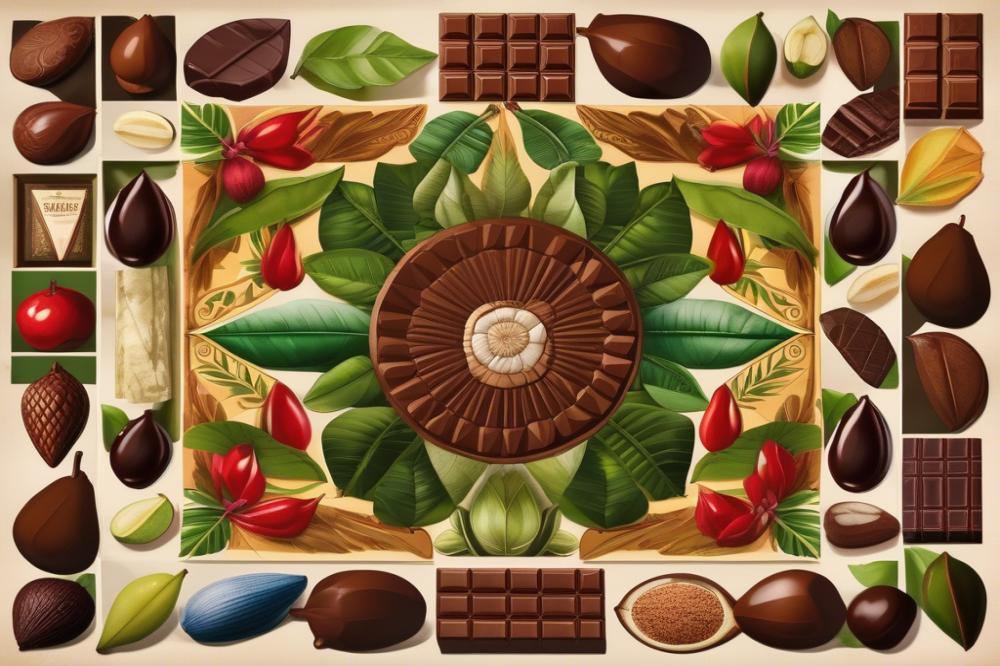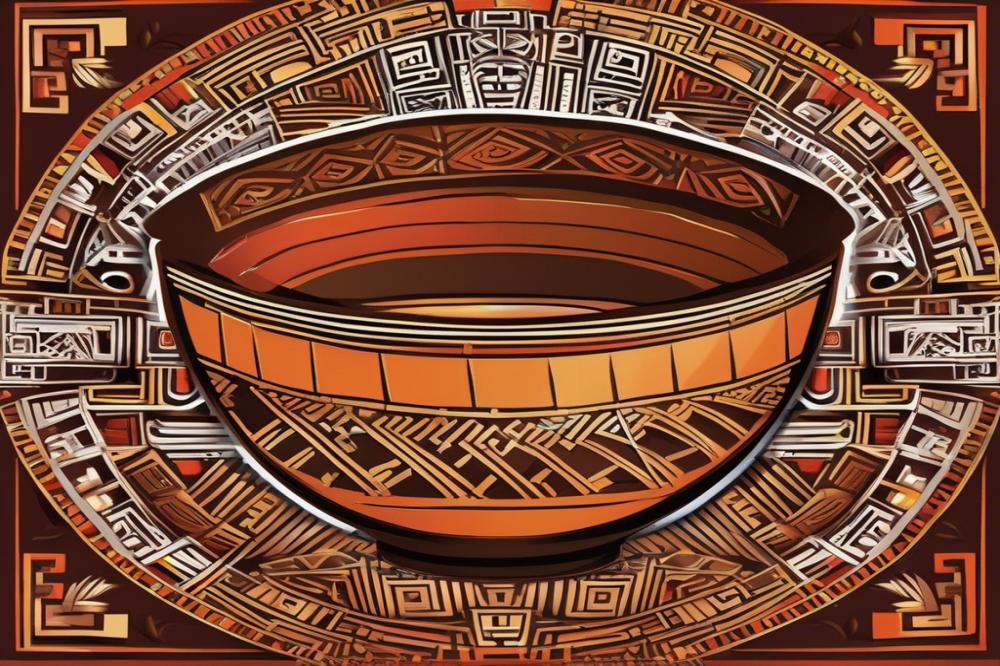The history of chocolate in Colonial America
chocolate has a fascinating place in our history and culture. It goes beyond just being a popular treat. The journey of cacao began in ancient societies, where indigenous cultures crafted it into drinks for rituals and daily life. The big change happened when European powers discovered these practices and recognized the value of cacao beans.
Trade routes began to form, and soon enough, cacao made its way to Colonial America. This movement wasn’t just about flavor; it was heavily influenced by colonialism. Plantations emerged, where cacao was cultivated under harsh conditions. The desire for trade pushed this product into the hands of many settlers. Recipes began to evolve. As chocolate entered the homes of colonists, it transformed from a bitter beverage to sweetened desserts, captivating many.
Consumption rates surged as the product gained popularity, and people began to appreciate this new addition to their diets. European influence on production methods allowed recipes to diversify significantly. The once bitter drink was often mixed with spices and sweeteners, making it more appealing to the colonial palate. By the time it reached American kitchens, chocolate had taken on a new identity, one that blended its rich history with the tastes of a new land.
Understanding the journey of chocolate reveals much about the connections between trade, colonialism, and culture. This unique product’s evolution tells stories of both hardship and enjoyment. As we explore this history, we uncover the complex relationships that chocolate has forged throughout time.
The Origins of Cacao
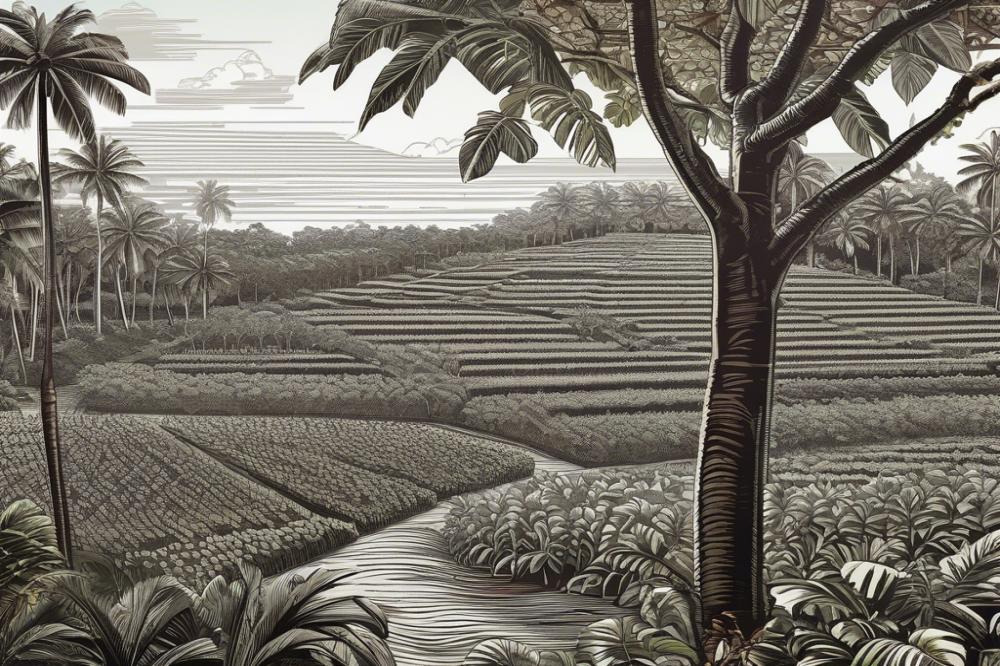
Cacao has deep roots in ancient Mesoamerican civilizations. People in these cultures held the cacao bean in high regard. Among the Olmec, Maya, and Aztec, cacao was much more than just a food source. It was integral to their rituals and social events. Serving a frothy chocolate drink during religious ceremonies was common. This beverage was often flavored with spices and consumed during important occasions.
Before European contact, indigenous cultures used cacao in various ways. It was a prized item for trade, demonstrating wealth and status. Recipes for drinks often included vanilla and chili, creating exciting flavors. Additionally, cacao beans sometimes served as currency. This relationship with cacao shaped economies and social hierarchies.
With the arrival of European explorers, everything changed. Cacao began to travel beyond its original borders. Europeans quickly became fascinated by its unique qualities. As the demand grew, cacao became a valuable commodity. Plantations for cultivating cacao appeared in the Caribbean. This marked the beginning of a significant trade network involving colonialism.
As cacao spread throughout Europe, its consumption evolved. People started creating new desserts that delighted taste buds. The rich, smooth texture inspired countless recipes and variations. Sweets made from cacao became popular among the aristocracy. Soon, chocolate houses emerged, similar to coffeehouses of the time. These establishments offered a social space for the upper class to enjoy their newfound indulgence.
The history of cacao is a story of transformation and adaptation. It signifies how a simple bean became a global sensation. Indigenous traditions influenced early European recipes, blending old with new. The impact of these changes continues to resonate even today. As we explore the journey of cacao, we uncover a rich tapestry of culture, economics, and culinary delight.
European Introduction and Adoption
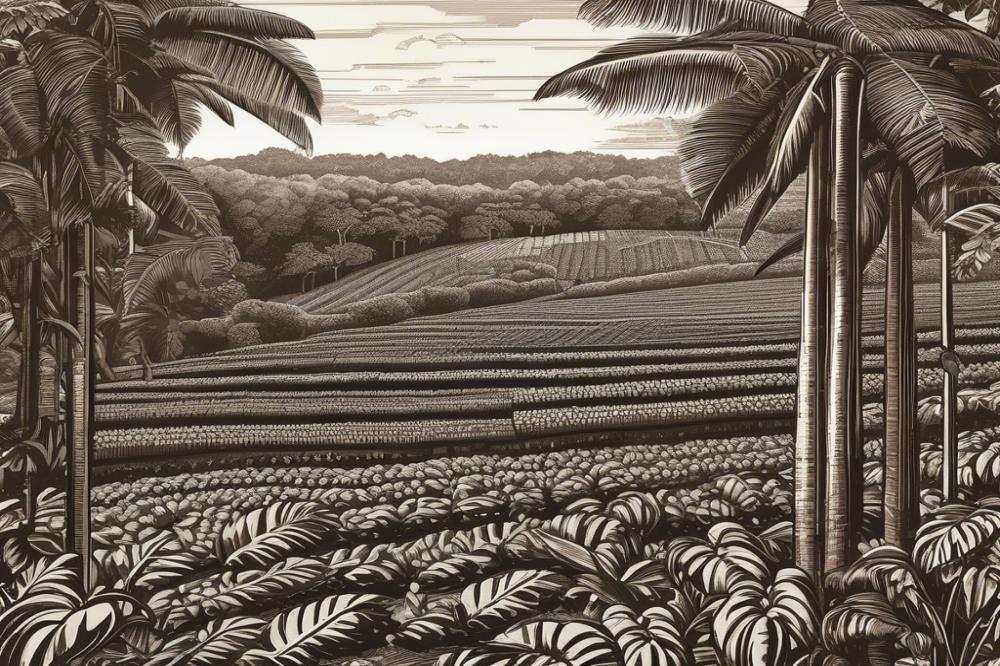
The arrival of cacao in Europe marked the beginning of a remarkable journey. Spanish explorers first brought cacao from the New World in the early 16th century after encountering it in indigenous cultures. Initially, the beans were used to make a bitter drink. This product quickly gained popularity among the Spanish nobility. The drink was often flavored with spices and sweetened with sugar. Over time, it spread throughout Europe, enchanting the taste buds of many.
Transformation played a key role in the beverage’s success. European chefs started experimenting with cacao. They developed new recipes that appealed to a wider audience. As consumption grew, the beverage became synonymous with luxury and sophistication. Chocolate houses began to open in major cities, serving this delightful drink to the elite. These establishments became social hubs, drawing in artists, philosophers, and politicians.
Trade routes expanded as demand increased. Merchants sought out cacao from overseas plantations to meet the rising interest. This trade was often tied to colonialism, as European powers established plantations in the Caribbean and Central America. Slave labor was employed on these plantations, highlighting the darker aspects of chocolate’s history. Yet, the influence on European cuisine was undeniable; chocolate began to influence various desserts and confections.
Throughout the 17th and 18th centuries, the drink evolved. Recipes varied from country to country, each adding a unique twist. In France, for instance, the beverage became smoother and creamier. In England, it was often drunk with milk, creating a rich and satisfying experience. This diversity mirrored the complex exchange between cultures during this time.
During the colonial period, social practices shifted. The act of drinking chocolate became a fashionable ritual among the upper classes. It was common for families to gather and enjoy the beverage during evenings. This simple act helped shape social interactions, paving the way for modern-day indulgences. Even today, the influence of cacao on social customs can be traced back to these historical practices.
Chocolate Trade in Colonial America
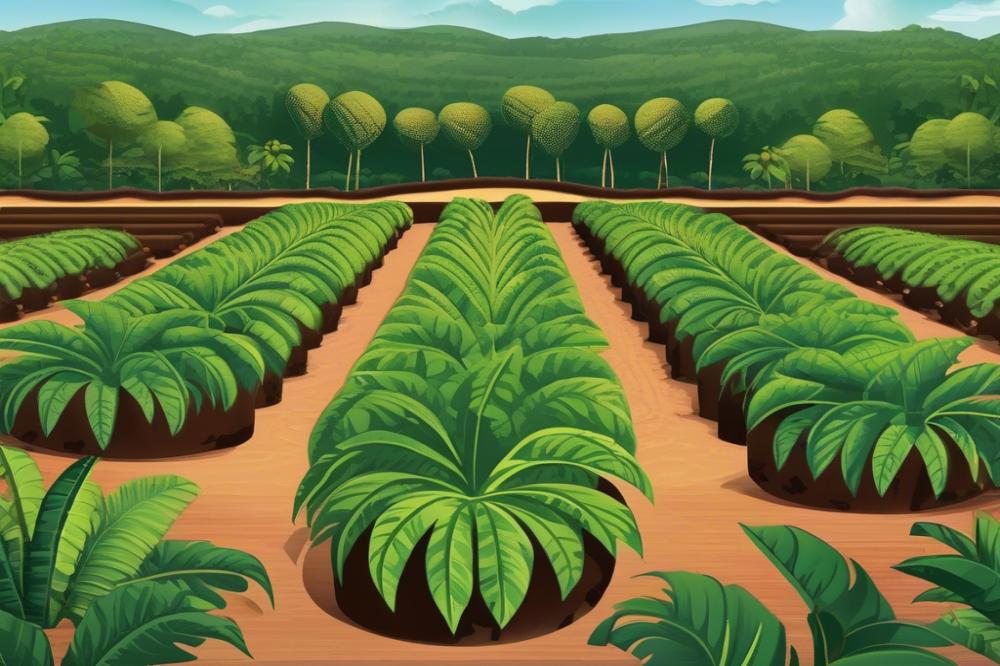
The history of cacao in Colonial America is rich and complex. From its origins with indigenous cultures in Mesoamerica to its rise as a sought-after commodity, the chocolate trade shaped many aspects of colonial life. Trade routes were established that linked the Americas with Europe, allowing for a steady flow of this beloved ingredient.
Various players participated in this booming trade. Plantations in places like Trinidad and Venezuela produced cacao beans on a large scale. European merchants recognized the potential for profit. They eagerly engaged in the trade, transporting cacao back to England, France, and Spain. These nations influenced the availability and recipes that emerged during this period.
Consumption shifted dramatically as European culture embraced cacao. Initially enjoyed as a bitter drink by indigenous peoples, cacao soon transformed into sweetened concoctions and luxurious desserts. This evolution reflects how colonialism played a crucial role in modifying traditional uses. Colonizers often adapted indigenous recipes to suit European tastes.
Economic implications of cacao plantations were significant. Plantations relied heavily on enslaved labor. This system not only enriched colonial economies but also tied together the fates of Europe and the Americas. Many fortunes were built on the backs of this labor, leading to a dark chapter in American history.
As demand for cacao grew, trade routes expanded. Ships laden with cacao beans crossed the Atlantic regularly. This increased connections among nations. The introduction of cacao into Europe sparked a craze for delightful desserts and beverages. Soon, every social gathering featured chocolate in some form.
Colonial America became a melting pot for flavor and culture. The interaction between European settlers and indigenous peoples created new food traditions. This blend of influences helped solidify cacao’s place in American society. It became not only a treat but a mark of status and sophistication.
In conclusion, the unique journey of cacao from its native lands to the hearts and homes of colonial Americans is a tale of trade, adaptation, and growth. The chocolate trade dramatically changed consumption patterns, linking the past with the present through delectable creations.
Chocolate Consumption in Colonial Society
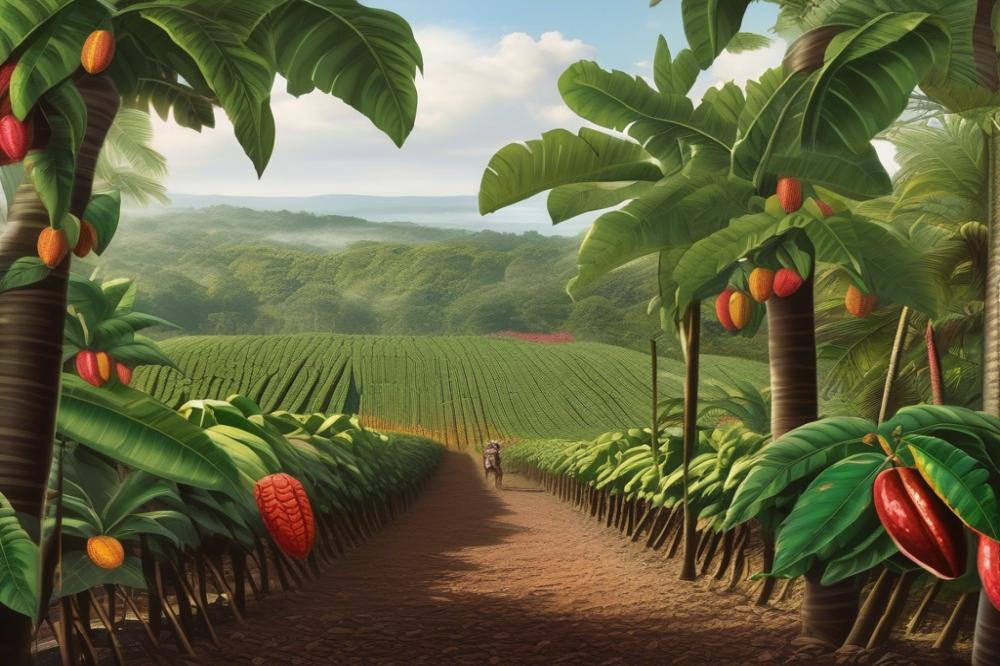
During the colonial era in America, chocolate was much more than a sweet treat. Its history is deeply intertwined with trade and colonialism. Cacao beans, shipped from distant plantations, arrived in the New World and sparked interest among the wealthy. The drink quickly grew popular among America’s elite, serving as a symbol of social status.
Early recipes for this beverage originated from indigenous cultures in Central America. The Europeans brought these recipes back to their countries, but they evolved over time. Sugar became an essential ingredient, transforming the originally bitter drink into something sweeter and more appealing. Interestingly, various spices like vanilla and cinnamon were added, which enhanced the flavor and made the drink even more extravagant.
Chocolate consumption in colonial society was not just about taste; it carried social significance. Hosting gatherings with chocolate drinks became a fashionable trend among affluent families. These occasions allowed the upper class to display their wealth and sophistication. Guests were often wowed by unique concoctions served in ornate cups, showcasing both the drink and the host’s riches.
However, it wasn’t universally enjoyed. The price of cacao kept many colonists from indulging. Even though some people craved it, only the wealthy could sip this delightful beverage regularly. As a result, chocolate became firmly associated with high social status, often appearing at special events and celebrations.
Over time, colonists began to incorporate cacao into desserts too. Chocolate cakes and other sweet treats emerged from early recipes, fueling a trend that further expanded its popularity. When the trade routes established by colonizers enhanced availability, more people were able to experience chocolate in different forms.
The European influence played a key role in shaping how chocolate was consumed. Drinking it hot and spiced became common, mirroring practices of the Spanish and French. Cafés and chocolate houses appeared in cities, much like the coffee houses of Europe. These venues provided places for socialization, discussions, and the enjoyment of chocolate, becoming popular hotspots in colonial towns.
The Influence of Indigenous Cultures
Indigenous cultures played a significant role in shaping the understanding and use of cacao in colonial America. Before European colonization, Native American societies were already using cacao for various purposes. The Mayans and Aztecs, for example, had unique recipes that transformed cacao into a drink, often mixed with spices like chili and vanilla. Preparation varied greatly across regions. Each society added its local flair to the beverage.
Consumption of cacao was not just a casual activity; it held deep cultural meaning. Cacao beans were even used as currency in some communities, signifying their importance in trade and daily life. The indigenous people valued this product so highly that it became a symbol of wealth and social status. When Europeans arrived, they quickly learned the significance of cacao and incorporated it into their own practices.
Colonialism brought about a fusion of ideas. European settlers adapted traditional recipes to suit their tastes. Sweeteners such as sugar became popular additions. Desserts made from cacao began to emerge, evolving from the bitter drinks enjoyed by Native Americans. This transformation marked a shift in the way people approached cacao and chocolate in general.
The establishment of plantations further changed the landscape of cacao production. As the demand for chocolate grew in Europe, more land was dedicated to cacao farming. Indigenous farming techniques heavily influenced these plantations, helping to shape the methods used to grow and harvest cacao. The blending of European influence and indigenous practices led to a diverse array of products.
Today, we can see the lasting impact of these early interactions. Recipes have evolved, yet many still draw from those early influences. The legacy of indigenous cultures is evident in how we approach chocolate today. Understanding this connection enriches our appreciation of this beloved treat.
The Evolution of Chocolate Desserts
The story of chocolate desserts in colonial America starts with a fascinating blend of cultures. As European powers colonized the Americas, they encountered indigenous cultures who had been using cacao for centuries. Early on, cacao was often consumed in drink form, served warm, and spiced with chili or vanilla. This introduction captivated the taste buds of settlers.
As trade routes expanded, the sweet ingredient found its way to European kitchens. The colonial period saw adaptations of indigenous recipes, transforming how people thought about desserts. Sugar, which was gaining popularity from Caribbean plantations, played a crucial role. Soon after, chocolate started to be mixed with sugar, giving rise to sweeter treats.
People began experimenting. Desserts featuring chocolate included cakes, puddings, and even pie. With each recipe, flavors and preparation methods evolved. Various spices, originally brought from Europe, blended with local ingredients. The result was a remarkable array of desserts that reflected both cultures joining together.
In New England, recipes began to emerge that showcased chocolate’s versatility. Cookbooks published in the 18th century featured instructions for chocolate cake and other delightful sweets. The influence of English and French cooking styles brought even more creativity to the table. Settlers enjoyed these new treats, often at special gatherings or celebrations.
It’s essential to note that chocolate consumption was not only for the wealthy. As ingredients became more common, enslaved Africans and indentured servants contributed to culinary innovations. Their unique approaches and techniques added depth to chocolate desserts. This collaboration of cultures underscores the diverse roots of American dessert tables.
Colonial America witnessed a sweet transformation that echo traditions from both sides of the Atlantic. Culinary practices evolved, leading to a rich dessert culture. That unique blending would set the stage for future generations, creating a lasting impact on American cuisine.
Legacy of Colonial Chocolate Practices
The history of cacao in Colonial America plays a significant role in shaping what we enjoy today. Colonialism brought cacao to European attention, and soon it captivated many. Early chocolate consumption was different; it was enjoyed as a warm beverage rather than a sweet treat. European influence transformed the way people viewed this exotic drink. The rich flavor soon became a status symbol among the wealthy.
Trade routes established during this time were crucial for cacao’s expansion. Merchants imported cacao beans from plantations in the Caribbean and South America. These beans were valued commodities, similar to sugar and coffee. As the demand grew, so did the establishment of plantations dedicated to cacao production. This swept through the colonies, impacting economies and interactions.
Recipes featuring cacao began to evolve during the colonial era. Influenced by indigenous cultures, early recipes often combined spices and herbs with the drink. Chocolate itself became a canvas for creativity in desserts. With the passage of time, sweeteners like sugar were added. Gradually, what started as an unsweetened drink transformed into the delightful confections we savor today.
Modern chocolate production owes much to these colonial practices. Today’s methods include mass production and intricate recipes that cater to diverse tastes. The techniques that emerged in colonial kitchens shaped how cacao is processed and enjoyed. As a result, chocolate has evolved into various forms, from creamy bars to rich desserts.
The impact on consumption cannot be overstated. Chocolate went from a rare indulgence to a widely loved treat available to many. This change is a direct reflection of how colonial chocolate practices laid the groundwork for its role in contemporary society. Now, chocolate is associated with celebration and comfort, weaving its way into our lives in countless delicious ways.
Reflections on a Sweet Past
The journey from cacao bean to a cherished treat in colonial society illustrates a fascinating transformation. Originally, cacao held a sacred place in Mesoamerican cultures, often used in religious rituals and discussions of wealth. When European colonists arrived, they discovered its rich flavor and the thrilling potential it offered. Chocolate quickly became a symbol of luxury and sophistication. It was served in elegant homes and popularized in vibrant social gatherings.
Cultural significance cannot be overstated. People in the colonies associated chocolate with wealth, status, and social connection. Inviting guests over for chocolate drinks showcased hospitality. Recipes evolved, adapting to local tastes, and a new love for desserts emerged. This blending of traditions warmed hearts and created community bonds.
Today, the legacy of colonial chocolate practices lives on. Whether it’s a warm cup during winter or a simple dessert at a party, the influence is apparent. Modern society embraces what started in those early days. In many ways, our contemporary choices reflect what colonists celebrated. The history of this delightful substance reminds us of the paths connecting cultures. It teaches us how something so simple can leave a lasting mark on life and traditions.

